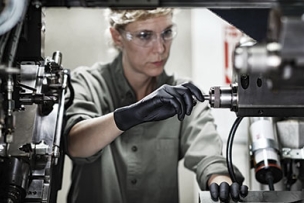MCR Safety has over forty years of experience as a leader in the field of personal protective equipment (PPE). Our assortment of offerings includes gloves, glasses, and garments which are made from the highest quality materials available to ensure maximum safety, comfort, and style.
Mechanics and automotive service technicians are two of the occupations with the highest employment numbers in the U.S. The Bureau of Labor Statistics (BLS) reported that, in 2016, there were 749,900 people employed as mechanics nationwide, and that number is projected to grow 6% by 2026, which is on par with the projected average growth rate across all industries (7%).
Mechanics work every day to ensure that the more than 276.1 million cars registered in the United States keep running. MCR Safety is dedicated to helping protect people, which means they keep the mechanics running with proper PPE protection. For an occupation that relies heavily on the use of their hands, choosing the right gloves is especially important for mechanics.
In this blog, MCR Safety talks a bit about the work that mechanics do, the hazards they face, and the gloves that the company offers that will help keep mechanics hands safe while on the job.
Automotive mechanics and service technicians inspect, maintain, and repair cars and light trucks. These workers typically spend a lot of time using their hands, and are often working in an enclosed vehicle where they are exposed to numerous hazards.
Mechanics engage in a variety of tasks when working on equipment, machines, and vehicles. Here are some:
- Test parts and systems to ensure that they work properly
- Perform basic care and maintenance, including changing oil, checking fluid levels, and rotating tires
- Repair or replace worn parts, such as brake pads, wheel bearings, and sensors
- Perform repairs to manufacturer and customer specifications
- Diagnose and explain automotive problems and repairs to clients
The average car has about 30,000 individual parts, and mechanics come into contact with most of them at one point or another. Being a mechanic requires a great deal of skill at correctly manipulating and seating car parts (down to the tiniest screw) without always being able to see them directly, while positioned in odd or uncomfortable angles.








Talk to Us!
Leave a reply
Your email address will not be published. Required fields are marked *